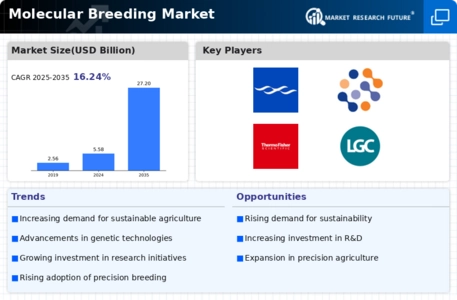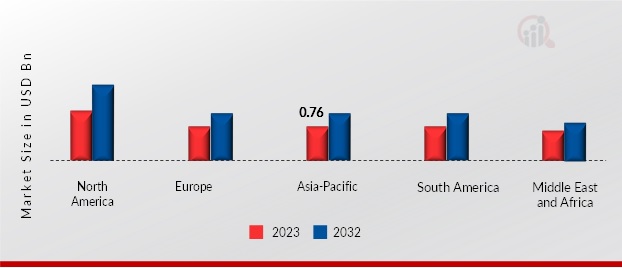Molecular Breeding Market Summary
As per Market Research Future Analysis, the Global Molecular Breeding Market was valued at USD 5.58 billion in 2024 and is projected to grow to USD 29.22 billion by 2035, with a CAGR of 16.24% from 2025 to 2035. The market growth is driven by the increasing development of high-yielding and stress-resistant varieties, rising awareness of molecular breeding, and growing consumer demand for nutritionally enhanced foods. North America held the largest market share in 2023, supported by advances in genomic technologies and substantial investments in agricultural R&D.
Key Market Trends & Highlights
Key trends driving the Molecular Breeding Market include advancements in breeding techniques and rising consumer demand for sustainable food.
- Market Size in 2024: USD 5.58 billion; projected to reach USD 29.22 billion by 2035.
- CAGR during 2024-2032: 16.24%; driven by high-yielding and stress-resistant crop development.
- North America accounted for the largest market share in 2023, benefiting from strong R&D investments.
- SNP segment dominated the market in 2023; SSR projected as the fastest-growing segment from 2024-2032.
Market Size & Forecast
| 2024 Market Size | USD 5.58 billion |
| 2035 Market Size | USD 29.22 billion |
| CAGR (2024-2035) | 16.24% |
Major Players
Key players include Charles River Laboratories (US), Eurofins Scientific (Europe), DanBred P/S (Denmark), Intertek Group Plc (UK), and Slipstream Automation (New Zealand).
















Leave a Comment